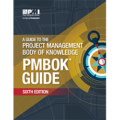
Project team management is the process of tracking team member performance, providing feedback, resolving issues, and managing project resources to optimize project performance.
It is one of the central cogs in the wheel of project management, and also one of the most difficult. No wonder why many books have been written about it from many perspectives.
But like most things in project management, you can strip it away into several core functions which, if performed well, give you strong odds of project success.
In that spirit, you need to only do these 8 things well and you will be certain to have a highly competent and motivated project team.
- Provide Leadership
- Make Them Feel Important
- Give Them a Voice
- Build Their Careers
- Monitor Interpersonal Conflict
- Practice Conflict Management
- Be Decisive
- Provide Feedback
Provide Leadership
There is nothing more powerful than a project manager that knows and implements one of the three main project management methodologies, but spends the bulk of their time exercising strong leadership. This is because project management requires both sides of the brain in equal amounts: The analytical and the creative.
Much has been written about the difference between management and leadership. Managers use methodologies to accomplish a task, whereas leaders provide inspiration and give the project team purpose.
Project management is, by definition, management. The Project Management Body of Knowledge (PMBOK), PRINCE2, and the ICB4 methodology from the IPMA represent the management, rather than the leadership, side of the equation.
Yet it’s leadership that makes projects really, truly succeed.
Leadership is providing an inspiring vision for the future and motivating people to engage with that vision.
Hence, the vision must be identified and communicated to the project team. Most projects have one or more deliverables that they have been created to produce.
- What is the vision for that final product?
- What will it look like?
- How will it make its end users feel?
- How will it accomplish that feeling?
These questions are things the project team must know that their project leader thinks about.
Make Them Feel Important
 Each project team member needs to know that they are making an important contribution to the project. When the project is complete each team member must be able to proudly say “I produced that part” to their friends and family. If not, their motivation will go down considerably.
Each project team member needs to know that they are making an important contribution to the project. When the project is complete each team member must be able to proudly say “I produced that part” to their friends and family. If not, their motivation will go down considerably.
This can be accomplished by the project manager in several ways:
- Provide recognition, for example an identification plaque with project team names, project team lunch, etc.
- Arrange for more senior members of the project team to include junior members in their work.
- Assign a small, relatively complicated task to someone to whom it will be a challenge, and support them in it.
Give Them a Voice
Project team members need to know that they have a say in project decisions. They are involved in producing the project work and technical project tasks. It follows that their opinions and ideas are invaluable to project success, as well as their own motivation.
When a project team member speaks up about an issue, their concerns must be taken seriously. When they propose a solution to a technical problem, it must be considered. And when they have ideas to improve the product, those ideas must be evaluated.
Project team members are effectively the project’s technical experts. When their input is not heard, they lose motivation. Likewise, when they know they can make suggestions that improve the product, they become highly motivated.
Build Their Careers
 By definition, projects are temporary endeavors with a defined beginning and end. Because of this, project team members will leave the project when it is complete and will need to find a new project, or a new job. Unless their goal is retirement, it is rare that a project team member is satisfied by simply completing the work on their current project and ending up with the same chance at securing employment on the next project. Even if their goal is retirement, the project is usually seen as the last stepping stone generating the income to get there.
By definition, projects are temporary endeavors with a defined beginning and end. Because of this, project team members will leave the project when it is complete and will need to find a new project, or a new job. Unless their goal is retirement, it is rare that a project team member is satisfied by simply completing the work on their current project and ending up with the same chance at securing employment on the next project. Even if their goal is retirement, the project is usually seen as the last stepping stone generating the income to get there.
Hence, project team members want to finish the project with something more than they started. This can be:
- Knowledge
- Skills
- Experience
Each of these items can be used to build their careers which will provide a tremendous boost to the morale of the project team.
Monitor Interpersonal Conflict
The most common reason why project team members leave is interpersonal conflict. This can be either sideways (with coworkers) or upwards (with superiors). Interpersonal conflict creates stress and makes the project team environment unhealthy for everyone, not just the people at the epicenter of the conflict.
Thus, one of the best things a project manager can do is monitor the interpersonal conflict on their team.
It’s never obvious to a manager until it’s serious. Many conflicts simmer under the surface until an event triggers a crisis. This forces the project manager into a crisis management situation that often could have been minimized had the issues been dealt with when they were small.
Practice Conflict Management
 Conflicts are inevitable in a project environment. Due to scheduling priorities, personal work styles, and scarce project resources, project managers must be familiar with the tools available to them when personal conflicts arise.
Conflicts are inevitable in a project environment. Due to scheduling priorities, personal work styles, and scarce project resources, project managers must be familiar with the tools available to them when personal conflicts arise.
Well established expectations, including job descriptions and team ground rules are essential to reducing conflict. In addition, strong communication is indispensible.
There are five general techniques for resolving conflict:
- Withdraw/avoid
Retreating from the conflict is not always an option, but when it is, postponing the issue to allow for additional preparation or to allow input from others can be a valid decision. - Smooth/accommodate
This technique involves emphasizing areas of agreement rather than areas of difference. It requires conceding one’s position to maintain harmony and relationships. - Compromise/reconcile
In this technique, both sides are asked to sacrifice part of their position to arrive at common ground. Some consider this to result in a lose-lose situation. - Force/direct
One side is chosen above the other. A win-lose decision is made which must be adhered to by both sides. This is often done from a position of power when an emergency decision must be made. - Collaborate/problem solve
Both sides are involved in open communication of viewpoints and differing perspectives of the situation. This approach can result in a win-win decision.
Be Decisive
Project management requires decision making skills. From technical decisions to project team decisions to stakeholder buy-in decisions, decision making is one of the core skills of a project manager.
There are six parts to the decision making process:
- Identify the problem
Defining the boundaries of the problem and its stakeholders is an often underrated component of the process. - Gather information
The background information is gathered, such as how we got to the current situation, why the problem arose, and the technical merits of the various positions. - Identify the alternatives
There are usually only a few paths forward. Even if there are many, each alternative is identified to ensure it is considered. Postponing the decision is often a valid alternative as well. - Determine the pros and cons
Each alternative has good results and bad results. If there are only good results, the decision would be easy. Each result is defined to ensure that the decision making body is well aware of them. The decision makers use risk analysis which consider the probability of the result occurring as well as their impact level to the organization. - Choose an alternative
From the results and risk analysis, a decision is made! - Review the decision
Not to be underestimated, this final step involves re-evaluating the decision at various stages of its implementation. What were the results, how do they compare to the original risk analysis, and what are the lessons for future decisions?
Provide Feedback
Nowadays most organizations have human resources departments that enforce employee performance reviews quite religiously. But if not, it is important to let project team members know where they stand and if they are meeting expectations.
Project team members that do not know if they are performing to expectations lose motivation to perform on the project. Hence, it is a requirement of strong project team management to ensure that strong feedback is given.






